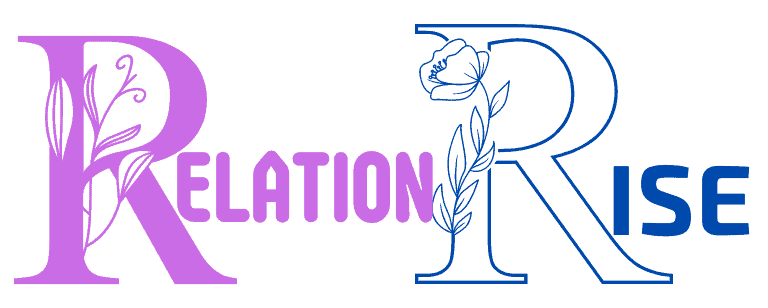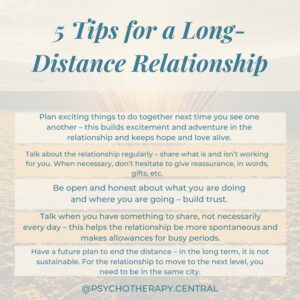Maintaining a Long Distance Relationship is Sometimes Difficult And Straining
Maintaining a long-distance relationship can be difficult and straining due to geographical separation and limited physical interaction. Balancing communication, trust, and emotional connection becomes challenging when significant distance is involved.
Long-distance relationships require dedication, open communication, and a strong foundation to overcome the obstacles. Establishing realistic expectations and finding ways to stay connected can help make the relationship thrive despite the distance. It’s essential to prioritize quality time together, embrace technology for constant communication, and plan visits to maintain the bond.
Despite the challenges of distance, many couples successfully navigate long-distance relationships and emerge with a deeper appreciation for each other. We will explore effective strategies for managing a long-distance relationship, providing insights and tips for overcoming the difficulties.

Trust And Communication Issues
Maintaining a long-distance relationship can be challenging, particularly when it comes to managing trust and communication issues. These two components are crucial for the success of any relationship, and when distance is added, they become even more critical. Lack of physical presence, misunderstandings, and assumptions are common factors that impact trust and communication in long-distance relationships.
Lack Of Physical Presence
The absence of physical proximity can lead to feelings of insecurity and doubt. In a long-distance relationship, the inability to see each other regularly can result in heightened levels of anxiety and concern about the other person’s commitment. This lack of physical contact may create a void that can be difficult to fill, leading to trust issues and communication gaps.
Misunderstandings And Assumptions
Communication in long-distance relationships heavily relies on technology, which can lead to misunderstandings and misinterpretations. Without the benefit of non-verbal cues, such as body language and facial expressions, words alone can be misconstrued, leading to assumptions and arguments. These misunderstandings can erode trust and create emotional distance, putting a strain on the relationship.
Emotional Strain And Loneliness
Long-distance relationships often come with emotional strain and feelings of loneliness. The physical separation and lack of daily in-person interaction can lead to a range of challenging emotions.
Helplessness And Frustration
In long-distance relationships, it’s common for individuals to experience feelings of helplessness and frustration. The inability to be physically present in each other’s lives during difficult times can amplify these emotions, leading to a sense of powerlessness and discontent. Communication alone cannot always alleviate the feelings of helplessness, as physical presence and actions are often needed to provide comfort and support.
Coping With Solitude And Isolation
Coping with the solitude and isolation that comes with a long-distance relationship can be incredibly challenging. The daily routine of being physically alone without your partner’s company can lead to feelings of loneliness and isolation. It’s important for individuals in long-distance relationships to actively seek out social interactions, hobbies, and activities that can help alleviate the effects of solitude and prevent a sense of isolation.
Time Zone Differences And Scheduling Conflicts
Time zone differences and scheduling conflicts can often pose significant challenges for couples in long-distance relationships. Dealing with these issues requires a great deal of patience, compromise, and understanding from both partners. Let’s explore how maintaining a balance between personal and professional lives, as well as planning quality time together, can help overcome these obstacles.
Balancing Personal And Professional Lives
In a long-distance relationship, it’s crucial for both individuals to find a harmonious balance between their personal lives and professional responsibilities. Managing time zones can make this task more challenging, as work schedules may not align properly, leading to difficulties in finding mutual free time to communicate and connect.
Here are some practical tips for navigating these challenges:
- Communicate openly about your work schedules and commitments.
- Be flexible with your time and make an effort to accommodate each other’s availability.
- Establish boundaries to protect your personal time and maintain a healthy work-life balance.
Planning Quality Time Together
Despite the obstacles presented by time zone differences, prioritizing quality time together is essential for sustaining a long-distance relationship. Planning virtual dates and creating opportunities for shared experiences can help bridge the physical gap and strengthen the emotional connection between partners.
Consider the following strategies to enhance the quality of your interactions:
- Coordinate regular video calls or virtual hangouts to maintain face-to-face communication.
- Engage in activities together, such as watching movies simultaneously or playing online games.
- Plan occasional visits to each other’s locations to enjoy in-person bonding and create lasting memories.
Building Trust Through Open Communication
Building trust through open communication is crucial in maintaining a long distance relationship. The physical distance can often lead to doubts and insecurities, making it imperative to establish a strong foundation of trust through transparent and honest communication.
Honesty And Transparency
In a long distance relationship, honesty and transparency are the cornerstones of trust. Open and sincere communication creates an environment where both partners feel safe and secure in expressing their thoughts and feelings. It’s essential to be upfront about your emotions and challenges, as this fosters a sense of reliability and dependability in the relationship.
Utilizing Technology For Connection
Technology has become a valuable tool for maintaining connection in long distance relationships. Regular communication through video calls, messaging apps, and social media platforms helps bridge the physical gap and allows partners to stay connected in real-time. Embracing technology as a means of staying in touch fosters a sense of closeness and minimizes the feelings of isolation that can arise from the distance.
Nurturing Emotional Connection From Afar
Nurturing an emotional connection from a distance can be challenging, but with thoughtful effort and creativity, it is possible to maintain a strong bond with your partner. Building and strengthening emotional ties is crucial to the success of a long-distance relationship and requires dedication and innovative approaches to communication and bonding.
Creative Date Nights
One effective way to nurture emotional connection in a long-distance relationship is through creative date nights. Set aside specific days for virtual or phone dates, where you can engage in activities together such as watching a movie simultaneously, playing online games, or cooking the same recipe while video calling. Making an effort to create memorable and enjoyable experiences can help maintain the emotional intimacy in the relationship despite the physical distance.
Establishing Shared Goals And Interests
Establishing shared goals and interests is fundamental in creating a strong emotional bond from afar. Identifying common interests and pursuits allows both partners to engage in meaningful conversations and activities, fostering a sense of connection and understanding. Whether it’s reading the same book or setting fitness goals together, shared interests provide a platform for bonding and cultivating a deeper emotional connection.
Managing Time Zones And Prioritizing Relationship
Long distance relationships can pose a considerable challenge, often taking a toll on the maintaining couples. One of the major obstacles that come with being in a long-distance relationship is managing time zones and prioritizing the relationship. If not handled properly, the difference in time zones between partners can lead to conflicts and communication breakdowns.
Flexible Schedules And Compromises
Flexibility in schedules is key when it comes to managing time zones in a long-distance relationship. Couples need to be understanding of each other’s routines and commitments, while also making an effort to set aside dedicated time for each other. Compromises may need to be made to ensure that both partners have the opportunity to connect despite the challenges that distance and time zones present.
Effective Communication About Expectations
Effective communication is vital when it comes to managing the expectations surrounding time zones and prioritizing the relationship. Couples must openly discuss and establish clear expectations regarding the frequency and timing of their communication. This allows for better understanding and avoidance of misunderstandings.
Self-growth And Personal Development
Maintaining a long distance relationship can be both challenging and rewarding. Among the challenges, one significant aspect that often arises is the potential for individual self-growth and personal development. It’s important for each partner to find ways to expand their personal horizons and maintain a sense of independence while nurturing their relationship.
Pursuing Hobbies And Passions
When in a long distance relationship, it’s crucial to invest in personal hobbies and passions. This can serve as an avenue for self-discovery and individual fulfillment, which contributes positively to the relationship. Devoting time to pursue personal interests not only aids in personal growth, but it also brings depth and richness when reunited with the partner, creating more opportunities for sharing experiences and fostering connection.
Fostering Independence Within The Relationship
Developing independence while being in a long distance relationship is essential for personal growth. Both partners should strive to maintain their independence and sense of self outside the relationship. It’s important to strike a balance between being part of a couple and maintaining individuality. This can involve engaging in separate activities, setting personal goals, and continuing personal development journeys. By nurturing independence, the bond between partners can remain healthy and dynamic.
How Do Musicians Navigate the Challenges of a Long Distance Relationship?
For many musicians, the reasons for choosing long-distance relationships are strongly tied to their careers. In order to pursue their musical aspirations, they must often tour or travel extensively. This can pose challenges for maintaining a close connection with a partner who may not be able to join them on the road.
Frequently Asked Questions Of Maintaining A Long Distance Relationship Is Sometimes Difficult And Straining
What Are The Challenges Of Maintaining A Long Distance Relationship?
Long distance relationship challenges include limited physical intimacy, communication barriers, and feelings of loneliness.
How Can I Strengthen My Long Distance Relationship?
You can strengthen your long distance relationship by maintaining open communication, planning visits, and expressing appreciation regularly.
What Are The Signs Of A Healthy Long Distance Relationship?
Healthy long distance relationships display trust, effective communication, mutual support, and the ability to maintain individual growth.
How Do I Manage Jealousy In A Long Distance Relationship?
Managing jealousy in a long distance relationship involves addressing insecurities openly, setting boundaries, and building trust through transparent communication.
What Activities Can I Do With My Partner In A Long Distance Relationship?
Engage in activities like watching movies together, playing online games, having virtual dates, and sending surprise gifts to maintain a strong connection.
How Can I Cope With The Emotional Challenges Of A Long Distance Relationship?
Coping with emotional challenges involves nurturing individual interests, seeking support from friends and family, and practicing self-care to maintain a healthy mindset.
Conclusion
In light of the challenges, maintaining a long distance relationship is undoubtedly a test of commitment and communication. However, with dedication and understanding, it is possible to overcome the hurdles. The key is to stay connected, trust each other, and manage expectations.
Despite the obstacles, the bond strengthened through the distance can be incredibly rewarding.






